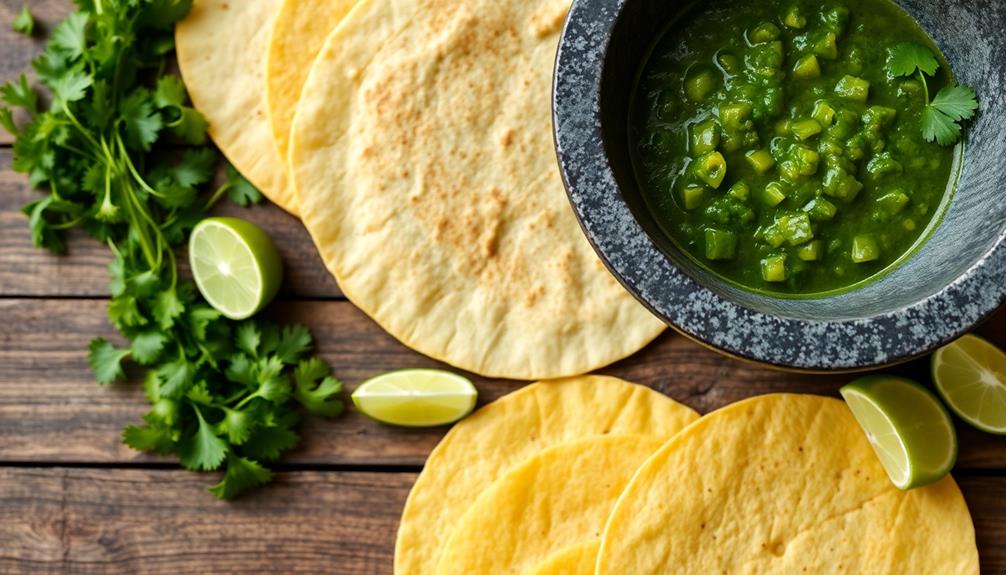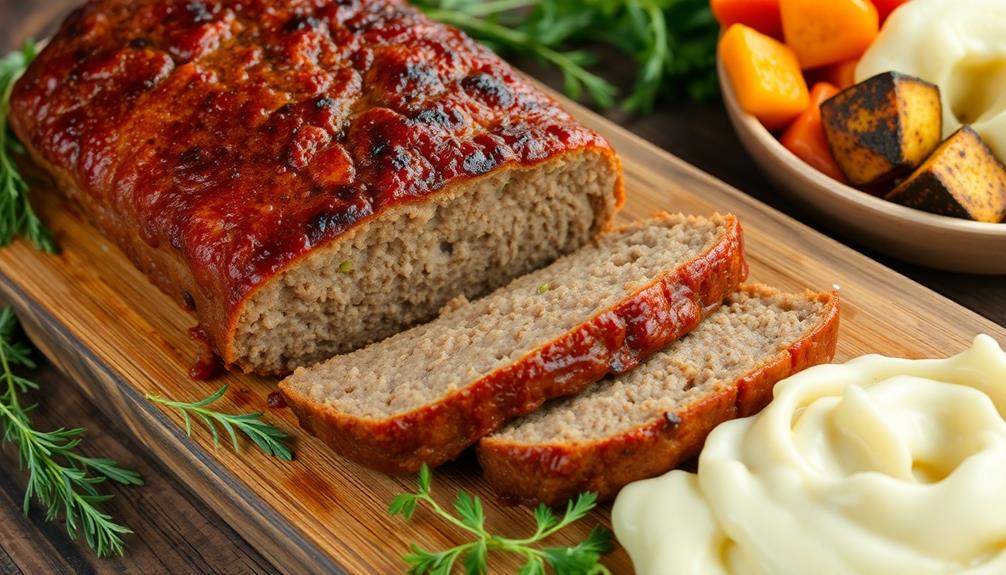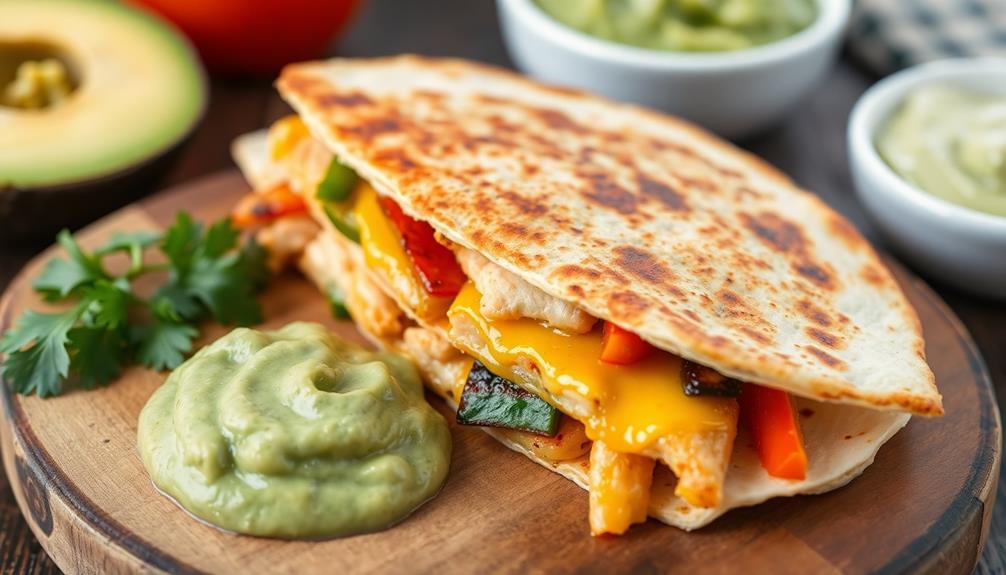Authentic tortillas originate from the rich culinary traditions of Mesoamerica, particularly the Aztec and Maya civilizations. Made primarily from ground maize, they've served as a staple food for centuries and held cultural significance. The essential ingredients are masa harina, warm water, and salt, which you'll combine to form a pliable dough. After resting, you'll divide the dough into balls, flatten them into thin rounds, and cook on a hot griddle until puffed and golden. This time-honored process can be deeply satisfying, and the flavorful results will elevate any meal – there's much more to discover about these versatile culinary treasures.
Key Takeaways
- Combine 2 cups masa harina, 1.5 cups warm water, and 0.5 teaspoon salt to form a pliable dough for authentic tortillas.
- Rest the dough for at least 30 minutes to enhance texture and workability before dividing into 12 equal balls.
- Cook the flattened tortilla dough balls on a hot skillet for 30 seconds to 1 minute per side until puffed and golden.
- Adjust the water-to-flour ratio and experiment with additional ingredients like herbs or spices to create unique tortilla variations.
- Freshly made tortillas offer a soft, pillowy texture and can elevate any meal, enhancing the overall dining experience.
History

Tortillas have a rich history that dates back to the indigenous cultures of Mesoamerica. These flatbreads, made from ground maize or other grains, have been a staple food for centuries, nourishing the people of regions like Mexico, Guatemala, and El Salvador.
The origins of tortillas can be traced to the Aztec, Maya, and other pre-Columbian civilizations, who developed sophisticated techniques for cultivating, processing, and cooking the corn that was central to their diets.
Tortillas weren't only a practical food, but also held deep cultural and spiritual significance, often used in religious ceremonies and rituals.
As these ancient traditions spread and evolved, tortillas became an integral part of the culinary identity of Latin America.
From the simple, hand-pressed varieties to the more elaborately prepared versions, the tortilla has remained a beloved and versatile food, adapting to the tastes and techniques of different regions and communities over time.
Recipe
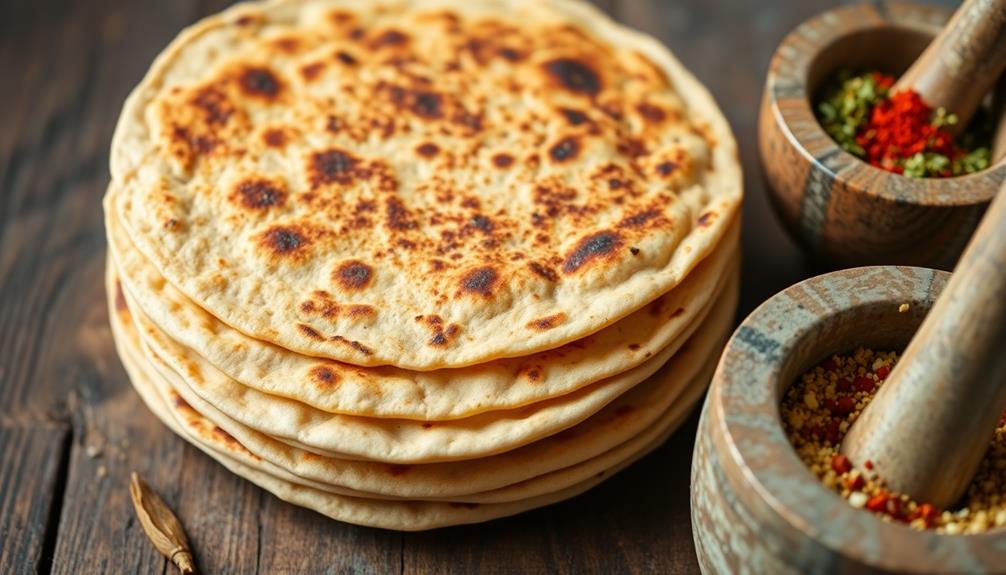
Authentic Tortillas are a staple in Mexican cuisine, a simple yet delicious flatbread that can be enjoyed on its own or as a base for a variety of dishes. The key to making truly authentic tortillas lies in the quality of the ingredients and the technique used in their preparation.
Tortillas have been a fundamental part of the Mexican diet for centuries, dating back to the Aztec and Mayan civilizations. These versatile flatbreads aren't only a versatile component in many Mexican meals, but they also hold cultural significance, representing the traditions and flavors of the region.
- 2 cups masa harina (corn flour for tortillas)
- 1 1/2 cups warm water
- 1/2 teaspoon salt
In a large mixing bowl, combine the masa harina and salt. Gradually add the warm water, stirring constantly, until a soft, pliable dough forms. Knead the dough for a few minutes until it becomes smooth and elastic.
Cover the dough with a damp cloth or plastic wrap and let it rest for at least 30 minutes.
Divide the dough into 12 equal pieces and roll each piece into a ball. Using a rolling pin, roll out each ball into a thin, round tortilla, about 6 inches in diameter.
Heat a dry skillet or griddle over medium-high heat. Cook the tortillas one at a time, for about 30 seconds to 1 minute per side, or until they puff up and develop light golden-brown spots.
Keep the cooked tortillas wrapped in a clean towel to keep them warm and pliable until ready to serve.
For best results, use freshly made masa harina and avoid over-kneading the dough, as this can make the tortillas tough.
Experiment with different toppings and fillings to create a truly authentic Mexican dining experience.
Cooking Steps
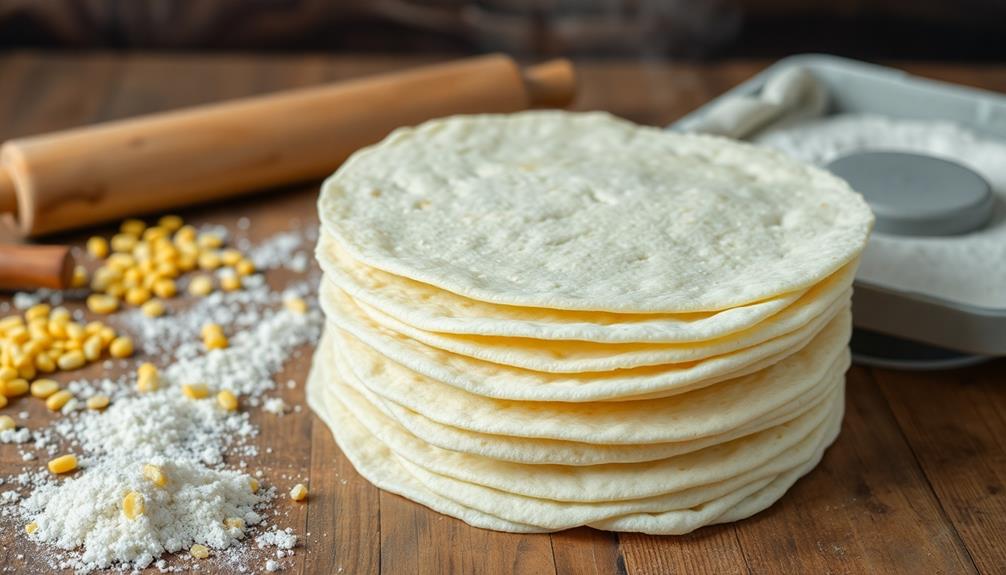
To make authentic tortillas, you'll first need to mix the masa harina and water until a dough forms.
Then, roll the dough into small balls and use a tortilla press to flatten them into thin rounds.
Step 1. Mix Masa Harina and Water
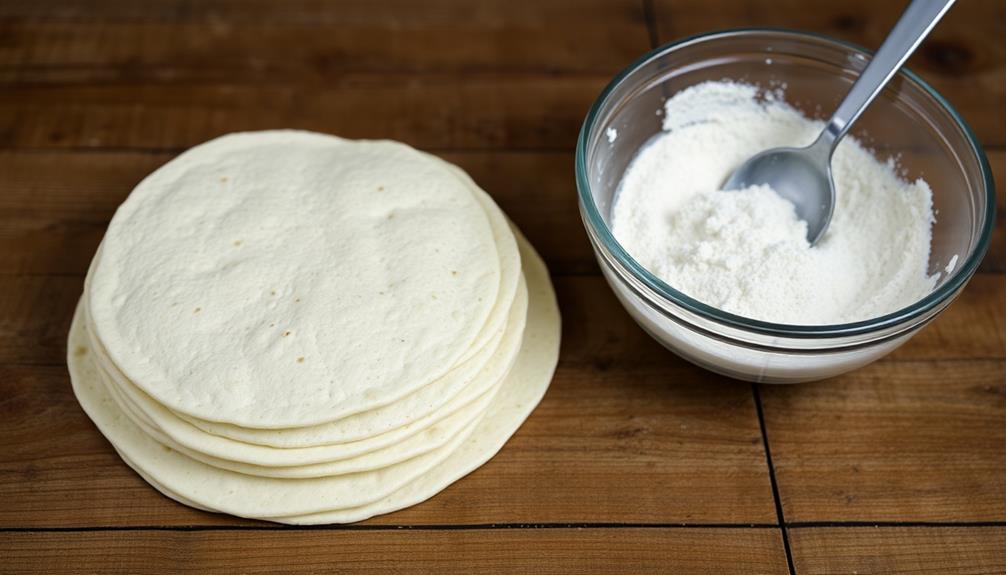
Start by combining the masa harina and water in a large mixing bowl. The masa harina, a specially treated corn flour, is the foundation of authentic tortillas. Gradually add the water, mixing the dough with your hands until it comes together into a soft, pliable ball. The ideal consistency is similar to that of playdough – not too wet or too dry.
Knead the dough for a couple of minutes to ensure even hydration and develop the gluten, which gives the tortillas their signature chewiness.
Cover the bowl with a damp towel and let the dough rest for at least 30 minutes. This resting period allows the masa to fully hydrate and makes the dough easier to work with.
After the rest, the dough is ready to be divided, shaped, and cooked into delicious tortillas. The next step is to roll out the dough into thin, round discs using a rolling pin or a tortilla press.
Keep the dough covered when not in use to prevent it from drying out.
Step 2. Roll Dough Into Balls
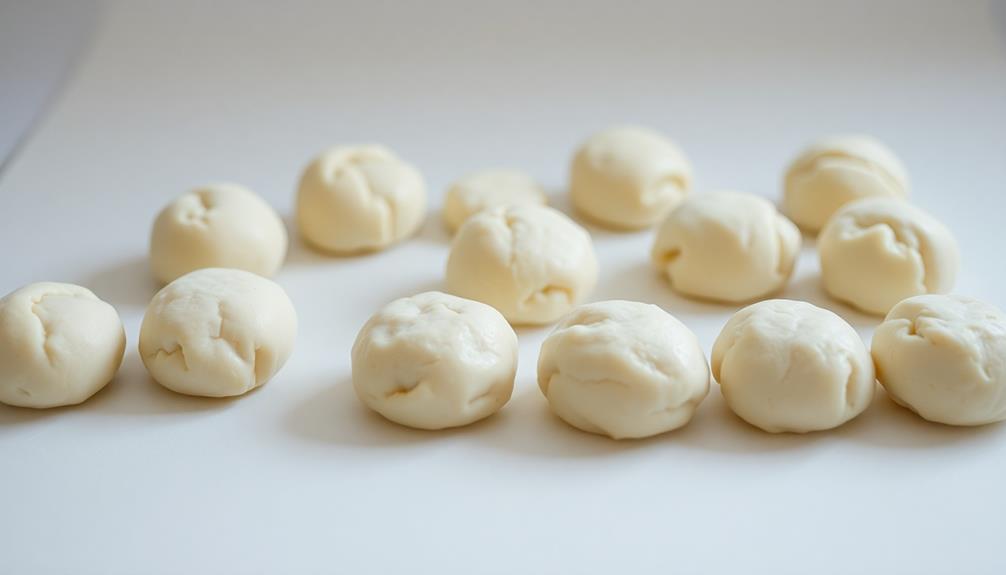
After the dough has rested, divide it into equal portions. Depending on the size of tortillas you desire, this could mean forming 8-12 golf ball-sized balls. Gently roll each portion between your palms to create a smooth, round shape.
Next, use a rolling pin to flatten each ball into a thin, round tortilla. Apply light, even pressure as you roll, turning the dough a quarter-turn after each pass to maintain an even thickness. Aim for a tortilla about 6 inches in diameter and 1/8-inch thick.
- If the dough sticks to the rolling pin or surface, lightly dust with additional masa harina.
- For perfectly round tortillas, use a plate or lid as a guide when rolling.
- Resist the urge to overwork the dough, as this can make the tortillas tough.
With your tortillas rolled out, they're ready to be cooked. Move on to the next step: cooking the tortillas on the stovetop.
Step 3. Press Dough With Tortilla Press

A tortilla press is a handy tool that can help you achieve perfectly round, evenly thick tortillas. To use it, simply place a dough ball between two pieces of plastic or parchment paper and press down firmly. The press will flatten the dough into a thin, circular shape.
Be sure to use the right amount of pressure – too little and your tortilla will be uneven, too much and it may tear.
Once you've pressed the dough, peel off the top layer of plastic or paper. Flip the tortilla over onto your hand, then gently peel off the remaining layer. This technique helps prevent the dough from sticking to the press.
If your tortilla isn't perfectly round, don't worry – you can use your hands to gently stretch and shape it as needed. Just be careful not to overwork the dough, as this can make the tortillas tough.
With a little practice, you'll be making picture-perfect tortillas in no time!
Step 4. Cook on Hot Griddle
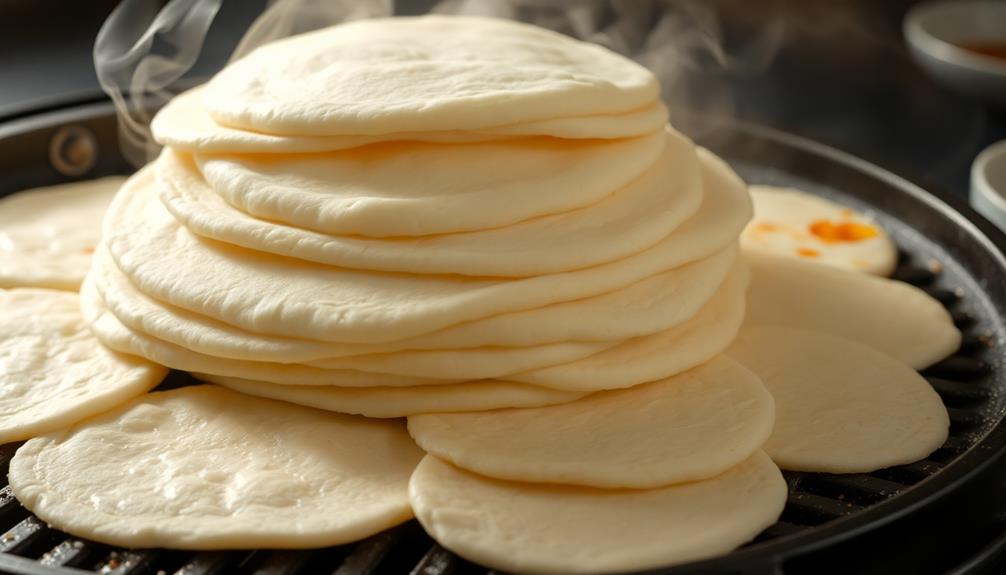
Once the tortillas are pressed, it's time to cook them on a hot griddle or skillet.
You'll want to ensure the surface is very hot – around 375°F (190°C) – before placing the tortillas on it. This high heat will help the tortillas puff up and develop those signature charred spots.
Carefully transfer the pressed tortillas to the hot griddle, working in batches if needed to avoid overcrowding.
Cook for 30-60 seconds per side, flipping with a spatula as they develop toasted spots. Be gentle when flipping to prevent tearing.
The tortillas are ready when they've puffed up and developed light brown spots on both sides.
Resist the urge to overcook, as this can make them dry and brittle.
As each batch finishes, transfer the warm tortillas to a clean kitchen towel or tortilla warmer to keep them soft and pliable until ready to serve.
Repeat with the remaining dough, keeping the griddle hot between batches.
Step 5. Flip and Cook Until Puffed
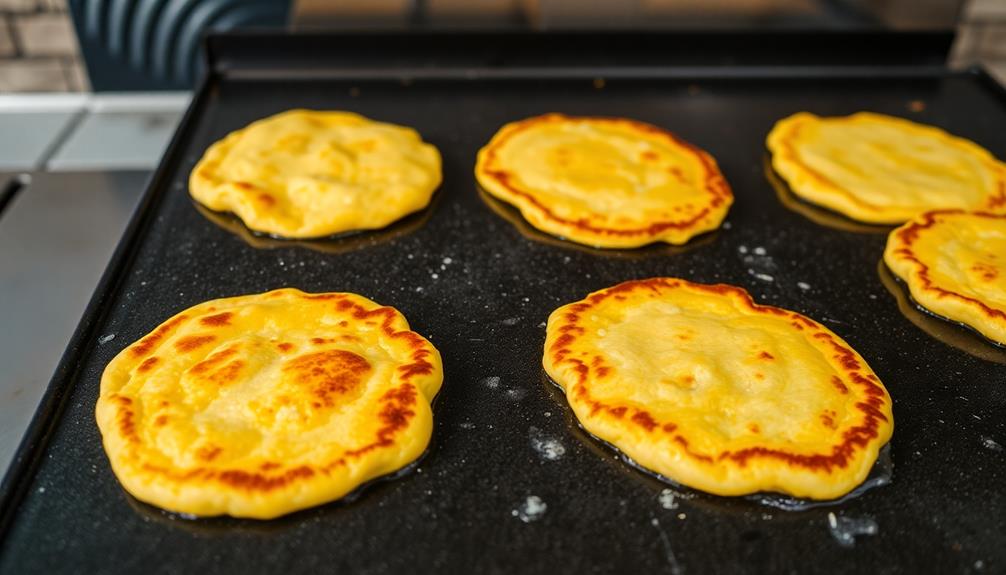
Carefully transfer the pressed tortillas to the hot griddle, working in batches if needed to avoid overcrowding.
Flip the tortillas using a spatula, being gentle to maintain their shape. Cook for 30-60 seconds on the first side, until you see small bubbles start to form and the tortilla puffs up slightly.
Flip the tortilla again and cook for an additional 30-60 seconds on the second side. The tortilla should be lightly golden and puffed up in the center when done. Keep a close eye to prevent burning.
Repeat this process with the remaining tortillas, adjusting the heat as needed to maintain the optimal cooking temperature.
The puffing action is an important sign that the tortilla is properly cooked. This happens as the trapped steam expands and creates those signature soft, pillowy pockets.
Be patient and let the tortillas cook at their own pace for best results.
Final Thoughts
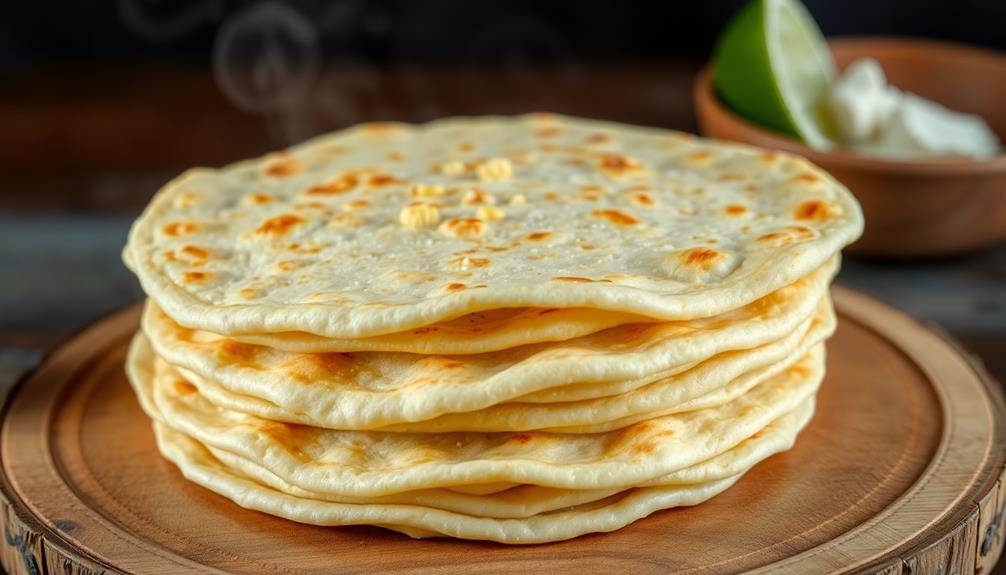
Crafting authentic tortillas requires dedication and a keen eye for detail. While the process may seem daunting at first, the reward of enjoying freshly made, pillowy soft tortillas is well worth the effort.
Remember, consistency is key – take the time to perfect your technique and adjust the recipe to suit your preferences.
As you continue on your tortilla-making journey, don't be afraid to experiment. Try different types of flour, play with the water-to-flour ratio, or experiment with additional ingredients like herbs or spices. Each batch is an opportunity to learn and fine-tune your skills.
Most importantly, savor the experience. Tortilla-making is a time-honored tradition, and the act of preparing them by hand can be deeply satisfying. Whether you’re making them for a special gathering or a simple family meal, each tortilla holds the care and attention you’ve put into the process. Pair your freshly made tortillas with an **easy homemade taco seasoning** to elevate the flavors even more. Together, they create a meal that’s not only delicious but also rooted in tradition and love.
Whether you're feeding a crowd or enjoying a quiet meal, the homemade tortillas you create will be a testament to your culinary prowess and the joy of mastering a true classic. The simplicity of ingredients—just flour, water, salt, and a bit of fat—comes together in a way that elevates even the most humble dish. Plus, once you learn how to make homemade tortillas, you’ll wonder why you ever settled for store-bought. The fresh, warm flavor will transform every bite into an experience to savor. Crafting your own batch allows you to customize them to your liking—whether it’s thinner, softer, or with a hint of added spices. This homemade tortillas recipe brings a versatility that pairs beautifully with everything from hearty stews to simple wraps. Once you give it a try, it just might become one of your favorite go-to kitchen traditions.
Frequently Asked Questions
What Type of Corn Should I Use for Authentic Tortillas?
For authentic tortillas, you'll want to use masa harina, a specially treated corn flour. This dried corn dough provides the perfect texture and flavor for making traditional Mexican tortillas at home.
Can I Substitute Flour for Corn in the Recipe?
You can't substitute flour for corn in an authentic tortilla recipe. Tortillas are traditionally made with masa harina, a type of dried corn flour, which gives them their unique flavor and texture. Flour won't achieve the same result.
How Long Do Homemade Tortillas Last?
Homemade tortillas can typically last about 3-5 days when stored properly in the refrigerator. They'll stay fresh longer if you wrap them tightly in plastic or store them in an airtight container to prevent them from drying out.
Can I Freeze Leftover Tortillas?
Yes, you can freeze leftover tortillas. Simply place them in an airtight container or resealable plastic bag and put them in the freezer. They'll keep for up to 3 months, so you can enjoy them later.
What Are the Best Toppings for Authentic Mexican Tortillas?
The best toppings for authentic Mexican tortillas are endless. You can top them with savory fillings like beans, cheese, salsa, and grilled meat, or sweet toppings like honey, cinnamon, and fruit. Get creative and find your favorite flavor combinations!
